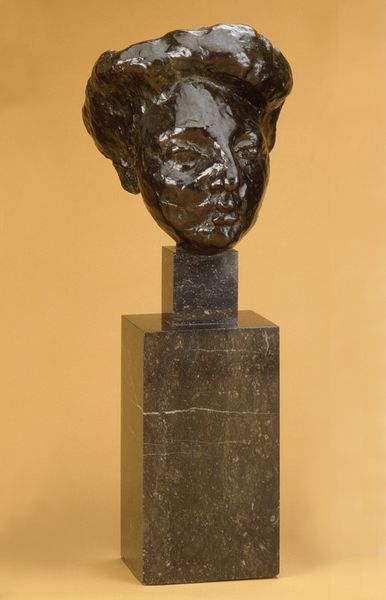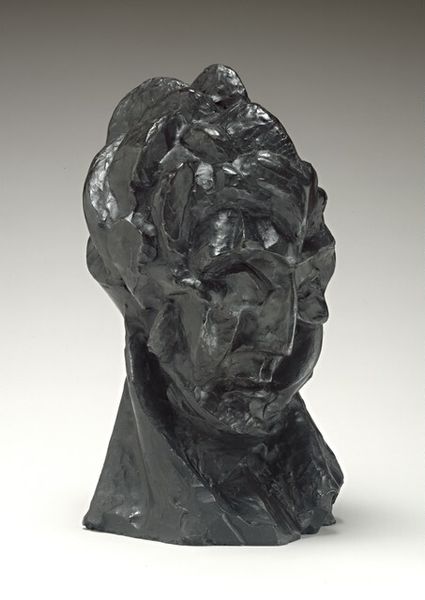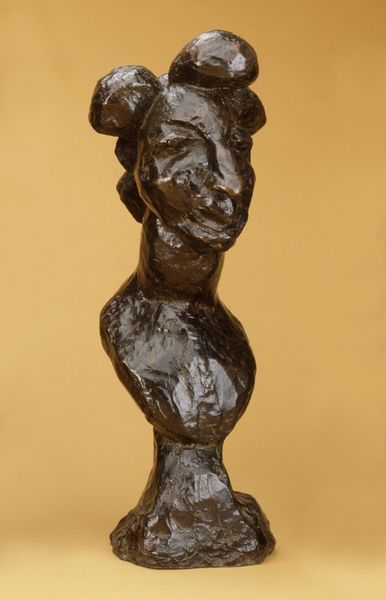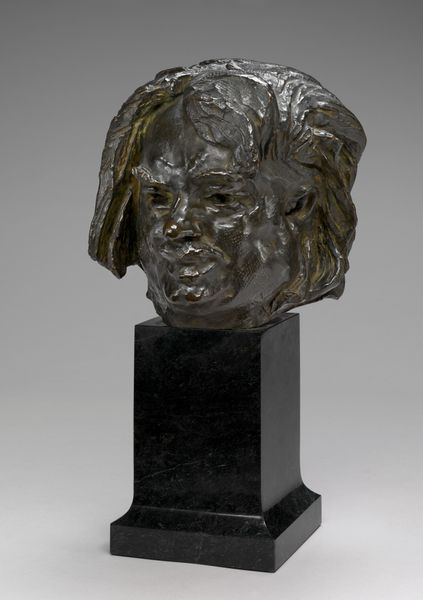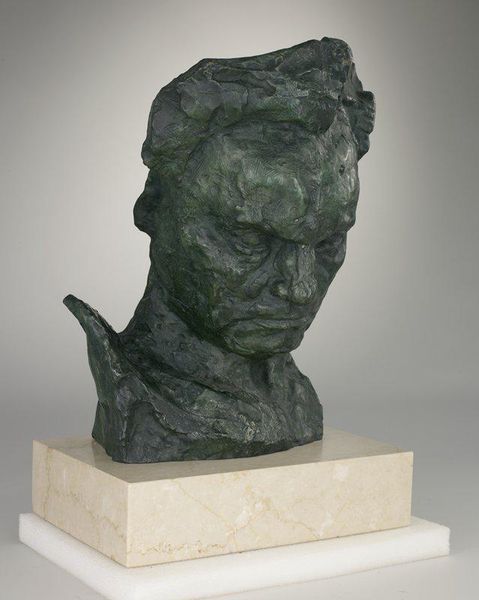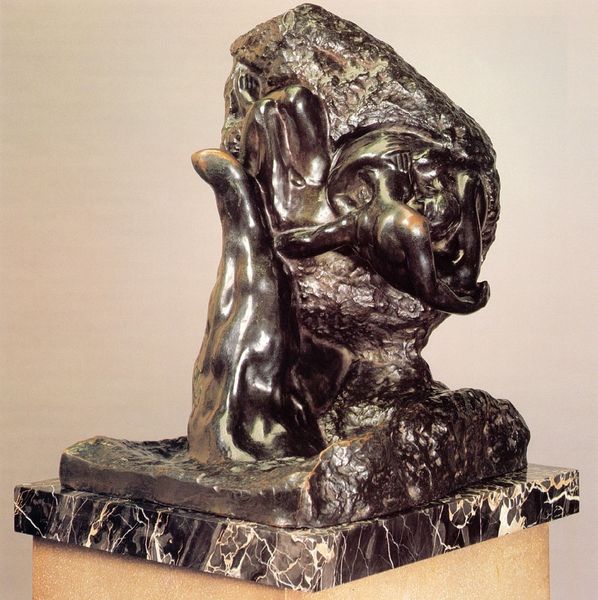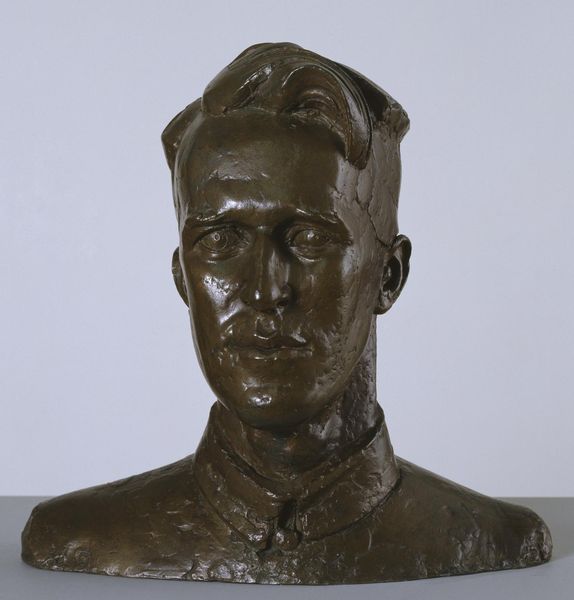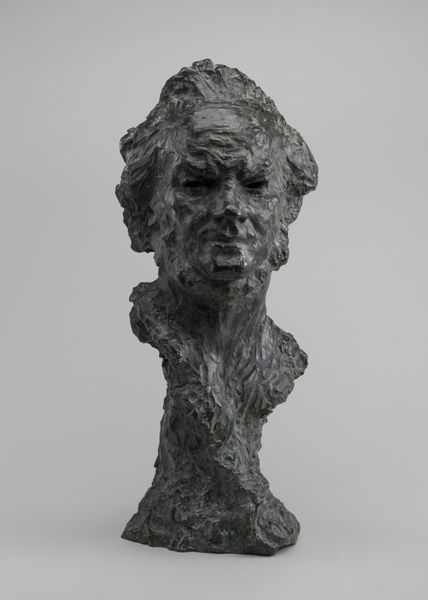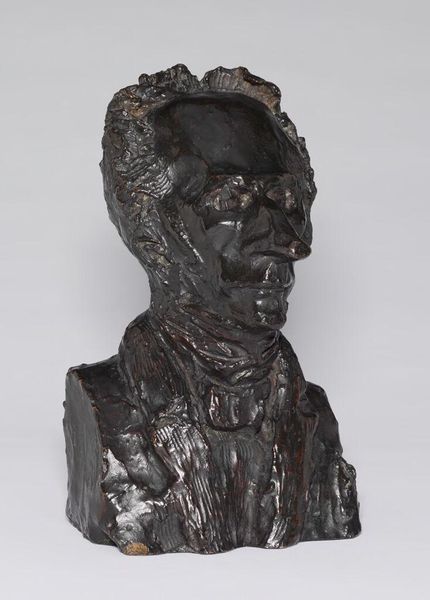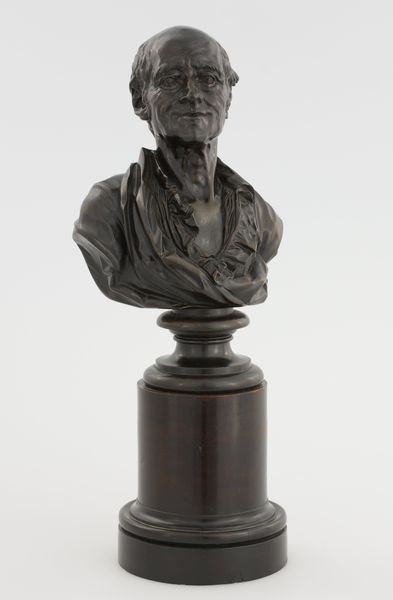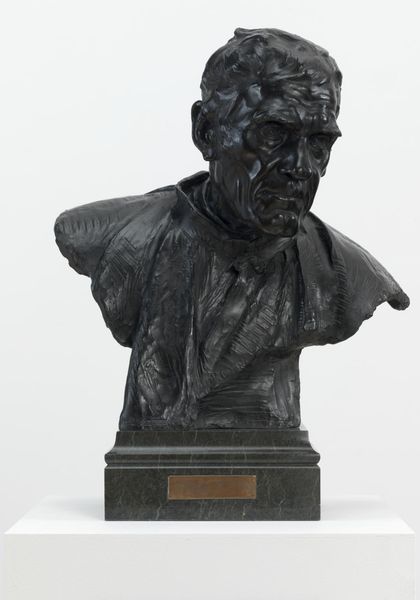
bronze, sculpture
#
portrait
#
art-nouveau
#
sculpture
#
bronze
#
figuration
#
sculpture
Copyright: Public domain US
Editor: Here we have Henri Matisse's "Jeannette I" from 1913, a bronze sculpture residing here at LACMA. There's something incredibly tactile about the rough surface; you can almost feel the artist's hand. What's your take on this piece? Curator: I'm fascinated by Matisse's engagement with the materiality of bronze. This isn't simply a portrait, it's a record of its own making. Notice how the surface retains the marks of the sculptor's tools? This foregrounds the labor involved, moving away from the illusionistic traditions. It almost collapses high art and what might traditionally be seen as "craft". Editor: That’s an interesting point. The rough texture does seem very intentional, almost like a rebellion against smooth, idealized sculpture. Do you think the choice of bronze was also a statement? Curator: Absolutely. Bronze was, and to some extent, still is, tied to permanence, to historical monumentality. But Matisse complicates this. By emphasizing the process of creation – the physical manipulation of the material – he subverts the traditional associations of the medium. Think about the foundry where it was cast: the laborers involved in pouring the metal, the firing process. These aspects are present, in a way, in the final object. He's inviting us to consider the social context of its production. Editor: So, you're suggesting the artwork is also about labor? Curator: Precisely. And perhaps a subtle commentary on the value we ascribe to artistic skill versus industrial production. Editor: Wow, I hadn't considered all those layers. Seeing it as a marker of the means of its production shifts everything! Curator: It challenges us to see beyond the surface and recognize the multifaceted narratives embedded within the materials themselves. I'm also finding interesting new relationships by examining materiality!
Comments
No comments
Be the first to comment and join the conversation on the ultimate creative platform.
